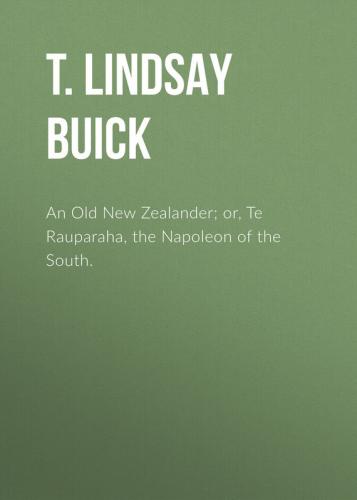4
The knowledge which the Polynesians possessed of the Southern sea, and their skill as navigators, was such that when "the fleet" set out from Rarotonga, they did not go to discover New Zealand, but they went with the absolute certainty of finding it.
5
"Man of the land, native, aboriginal." Probably these people were a mixture of the Melanesian and Polynesian types.
6
On this occasion Hotu-nui is credited with having addressed his people in the following terms: "Friends, hearken! Ours was the first canoe to land in New Zealand before any of you had arrived here. But let this be the proof as to which of our canoes landed first. Let us look at the ropes which the various canoes tied to the whale now before us, and also let us look at the branches of the trees which each have put up in building an altar, then the owners of the rope which is the driest and most withered, and of the altar the leaves of which are the most faded, were the first to land on the coast of the country where we now reside."
7
After the canoe left Whanga-poraoa the first stopping-place was at Whare-nga, where the crew amused themselves with various games on the beach. To mark the spot, one legend has it, they placed one large stone on top of another, while a second story has it that this monument, which is still existent and is called
8
Now called Mount Victoria or "Flagstaff Hill."
9
Waitemata may be interpreted as "the waters of volcanic obsidian," no doubt a reference to the eruptive disposition of Mount Rangitoto.
10
Otahuhu signifies "ridge-pole." This portage is only 3,900 feet long and 66 feet high.
11
There are different versions of this tradition, some attributing the transfixing of the canoe to Marama, others crediting her with releasing it. The version given in the late Sir George Grey's
12
Some authorities are of opinion that the Tainui was not taken across the portage at Otahuhu (ridge-pole), and they base this contention upon the fact that no traditional marks have been left inside the Manukau harbour. All the points of interest which have been handed down, and are remembered, are on the sea coast; and from this circumstance it is argued that the canoe was never in Manukau harbour at all. Others say that some of the skids of Tainui were left at South Manukau Heads.
13
As they were passing the mouth of the Waikato, the priest of the canoe, noticing that the river was in flood, named it by calling out "
14
The distance between these stones is 86 feet, indicating the probable length of the Tainui canoe.
15
Now called Te Fana-i-Ahurei (or, in Maori, Te Whanga-i-Ahurei, the district of Ahurei).
16
The Tainui brought the species of kumaras known as
17
"I reckon this country among the most charming and fertile districts I have seen in New Zealand" (
18
The natives call them Whenuapo.
19
His full name was Raumati-nui-o-taua. His father was Tama-ahua, who is reputed to have returned to Hawaiki from New Zealand, and his mother was Tauranga, a Bay of Plenty woman.
20
The date of this incident has been approximately fixed at a. d. 1390, or forty years after the arrival of "the fleet."
21
"It is to be presumed that Raumati's relatives and friends at Tauranga made his cause their own, for they met the Arawa people somewhere near Maketu, where a great battle was fought. Raumati's party, though successful at first, were defeated, and their leader killed by the power of
22
Braves.
23
Waitohi had other children, one of whom, Topeora, afterwards became the mother of Matene Te Whiwhi, one of the most influential and friendly chiefs on the west coast of the North Island. Topeora is perhaps more famed than any other Maori lady, for the number of her poetical effusions, which generally take the form of
24
There appears to be some doubt as to the exact locality of Te Rauparaha's birth, some authorities giving it as Maungatautari and others as Kawhia.
25
Marore was killed by a member of the Waikato tribe – it is said, at the instigation of Te Wherowhero – while she was attending a
26
War party.
27
The traditional accounts of the Maoris have it that at this period Te Rauparaha was "famous in matters relative to warfare, cultivating generosity, welcoming of strangers and war parties."
28
This tribe was afterwards partially exterminated during the raids of Hongi and Te Waharoa.
29
"When Paora, a northern chief, invaded the district of Whanga-roa, in 1819, the terrified people described him as having twelve muskets, while the name of Te Korokoro, then a great chief of the Bay of Islands, who was known to possess fifty stand of arms, was heard with terror for upwards of two hundred miles beyond his own district" (
30
"If we take the whole catalogue of dreadful massacres they (the New Zealanders) have been charged with, and (setting aside partiality for our own countrymen) allow them to be carefully examined, it will be found that we have invariably been the aggressors: and when we have given serious cause of offence, can we be so irrational as to express astonishment that a savage should
